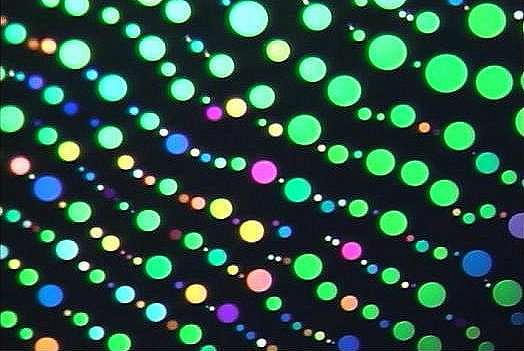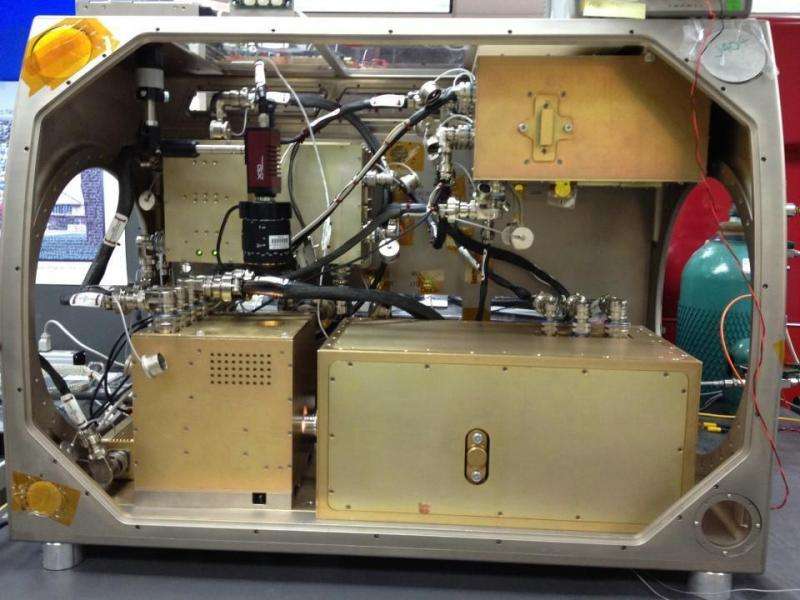Liquid crystal bubble OASIS in space

No matter how beautiful or crystal clear the bubbling waters of an oasis may be, they seldom lead to technology breakthroughs. Yet, NASA's OASIS investigation's bubbles may lead to an ocean of new improvements in our technology for use both on Earth and in space.
In the Observation and Analysis of Smectic Islands In Space (OASIS) study, scientists are using bubbles and the International Space Station to understand fluid dynamics and liquid crystal physics.
Think of soap bubbles, as explained by OASIS Principal Investigator Professor Noel Clark of the University of Colorado, Boulder, Colo. The iridescent colors on soap bubbles come from the fact the bubble can change thickness when water flows back and forth over the surface, making it thicker in some places and thinner in others. The thicker places on the bubble look like islands. OASIS is looking at these thicker parts, referred to as smectic islands.
OASIS researchers will examine these islands on liquid crystal bubbles that could be as thin as 6 nanometers. Compare that to the thickness of a normal human hair, which is around 60,000 nanometers.
In normal gravity, as the islands form into larger sizes or multiple layers, they slide to the bottom of the bubble in the same way as soap bubbles thicken at the bottom. The behavior of these islands in microgravity is something scientists can observe on space station.
The investigation launched on April 14 and will remain on space station for most of the year. The actual experiment will be conducted over an 11-week period with breaks in between test runs. The first set of tests is scheduled for early June.

The scientific objectives are to study how liquid flows in two dimensions, known as fluid dynamics, and to explore the interactions as particles align to form new structures.
"OASIS is the first study of smectic liquid crystal materials in microgravity, and may well be the first study of any liquid crystal material in microgravity," said Clark. "Smectic liquid crystal bubbles constitute a unique experimental platform for advancing fundamental understanding of fluid dynamics."
This study is significant because liquid crystals are part of a growing industry and are used in everything from wristwatches to the helmets astronauts wear in space.
"Liquid crystal-display manufacturing alone is over a $300 billion per year industry that is growing fast," said Padetha Tin, Ph.D., OASIS project scientist, NASA's Glenn Research Center, Cleveland. "From cell phones to laptops, to medical equipment, to space applications. You name it. It needs liquid crystals and their associated electronics."
OASIS may even help NASA improve its space helmet micro-displays. Similar in function to GPS-equipped ski-goggles or Google Glass, these displays allow astronauts to see instructions right in the helmet. Understanding how liquid crystals behave in space may help NASA improve these applications.
Provided by NASA/Johnson Space Center



















